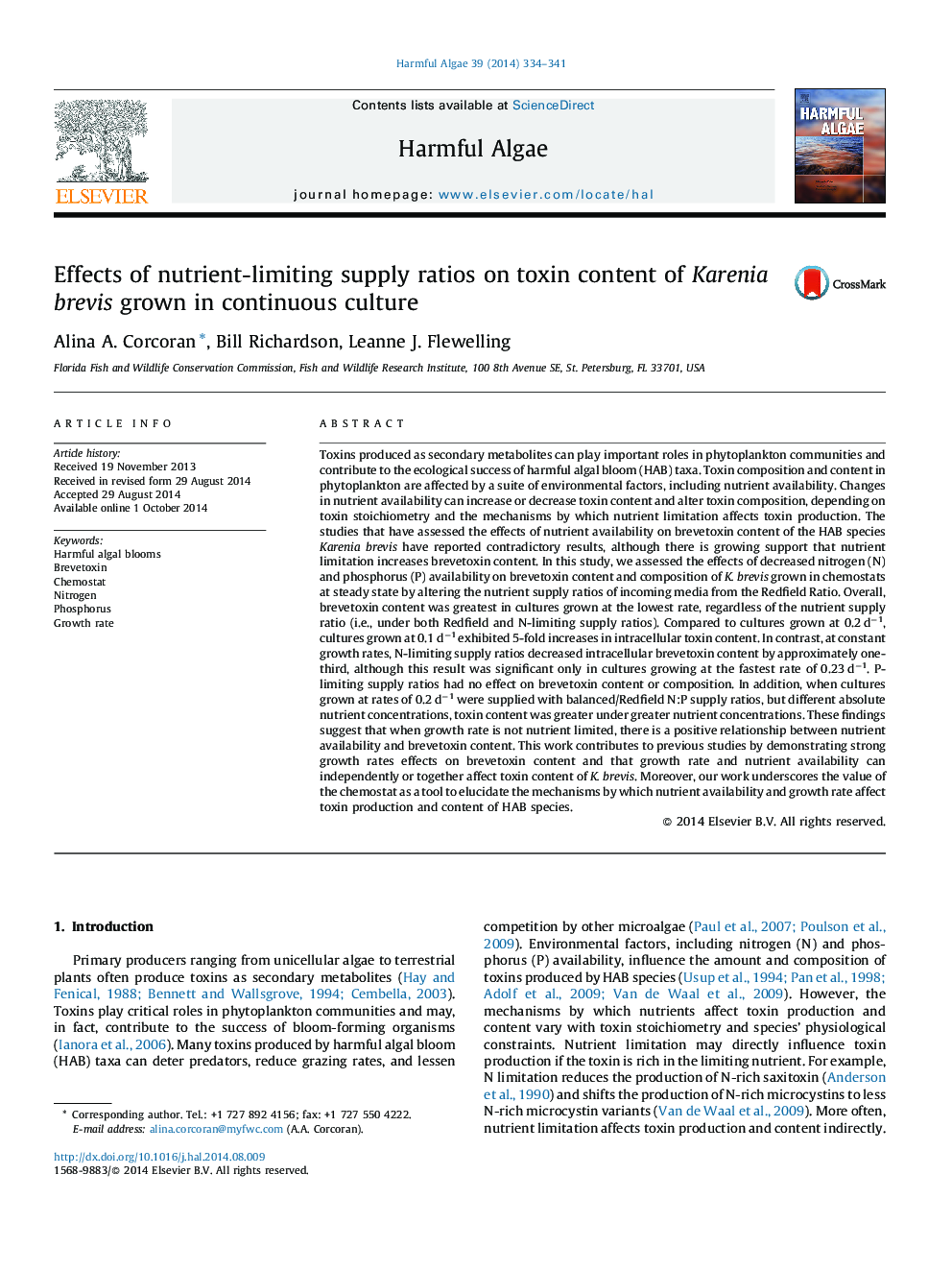| کد مقاله | کد نشریه | سال انتشار | مقاله انگلیسی | نسخه تمام متن |
|---|---|---|---|---|
| 6386272 | 1626932 | 2014 | 8 صفحه PDF | دانلود رایگان |

- Brevetoxin content was greatest in cultures grown at the lowest growth rate.
- Growth rate and nutrient availability independently and together affect toxin content.
- N-limiting supply ratios reduced brevetoxin content by approximately one-third.
- P-limiting supply ratios did not affect on brevetoxin content or composition.
Toxins produced as secondary metabolites can play important roles in phytoplankton communities and contribute to the ecological success of harmful algal bloom (HAB) taxa. Toxin composition and content in phytoplankton are affected by a suite of environmental factors, including nutrient availability. Changes in nutrient availability can increase or decrease toxin content and alter toxin composition, depending on toxin stoichiometry and the mechanisms by which nutrient limitation affects toxin production. The studies that have assessed the effects of nutrient availability on brevetoxin content of the HAB species Karenia brevis have reported contradictory results, although there is growing support that nutrient limitation increases brevetoxin content. In this study, we assessed the effects of decreased nitrogen (N) and phosphorus (P) availability on brevetoxin content and composition of K. brevis grown in chemostats at steady state by altering the nutrient supply ratios of incoming media from the Redfield Ratio. Overall, brevetoxin content was greatest in cultures grown at the lowest rate, regardless of the nutrient supply ratio (i.e., under both Redfield and N-limiting supply ratios). Compared to cultures grown at 0.2Â dâ1, cultures grown at 0.1Â dâ1 exhibited 5-fold increases in intracellular toxin content. In contrast, at constant growth rates, N-limiting supply ratios decreased intracellular brevetoxin content by approximately one-third, although this result was significant only in cultures growing at the fastest rate of 0.23Â dâ1. P-limiting supply ratios had no effect on brevetoxin content or composition. In addition, when cultures grown at rates of 0.2Â dâ1 were supplied with balanced/Redfield N:P supply ratios, but different absolute nutrient concentrations, toxin content was greater under greater nutrient concentrations. These findings suggest that when growth rate is not nutrient limited, there is a positive relationship between nutrient availability and brevetoxin content. This work contributes to previous studies by demonstrating strong growth rates effects on brevetoxin content and that growth rate and nutrient availability can independently or together affect toxin content of K. brevis. Moreover, our work underscores the value of the chemostat as a tool to elucidate the mechanisms by which nutrient availability and growth rate affect toxin production and content of HAB species.
Journal: Harmful Algae - Volume 39, October 2014, Pages 334-341